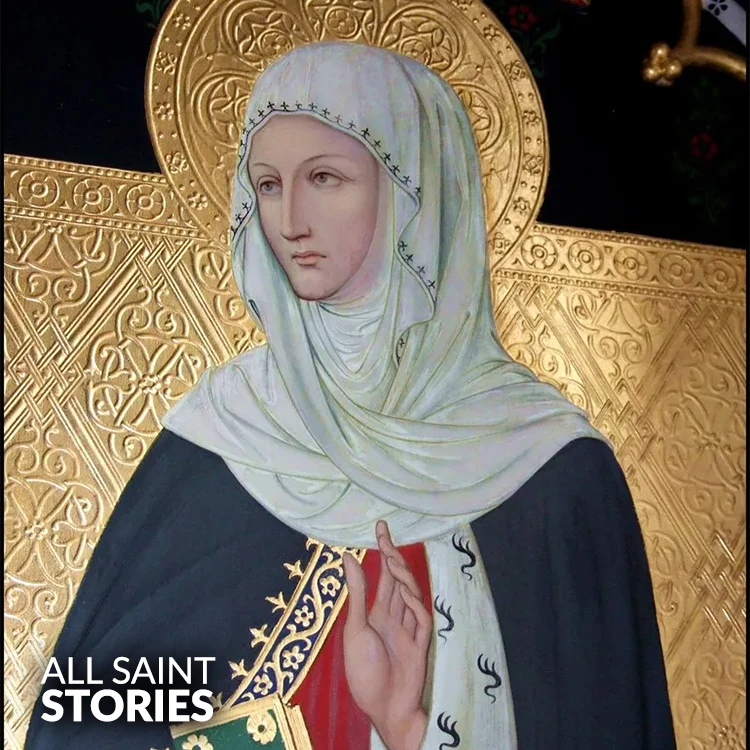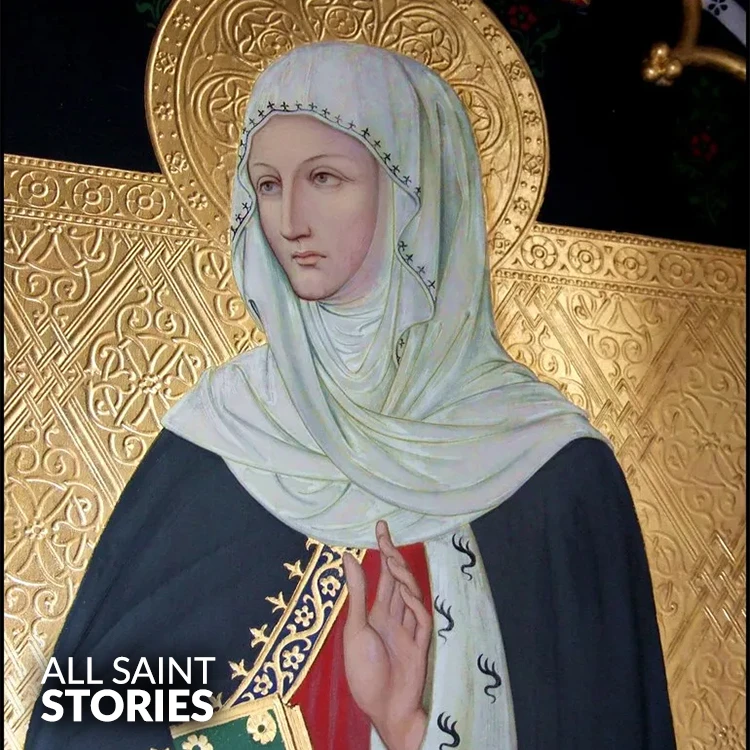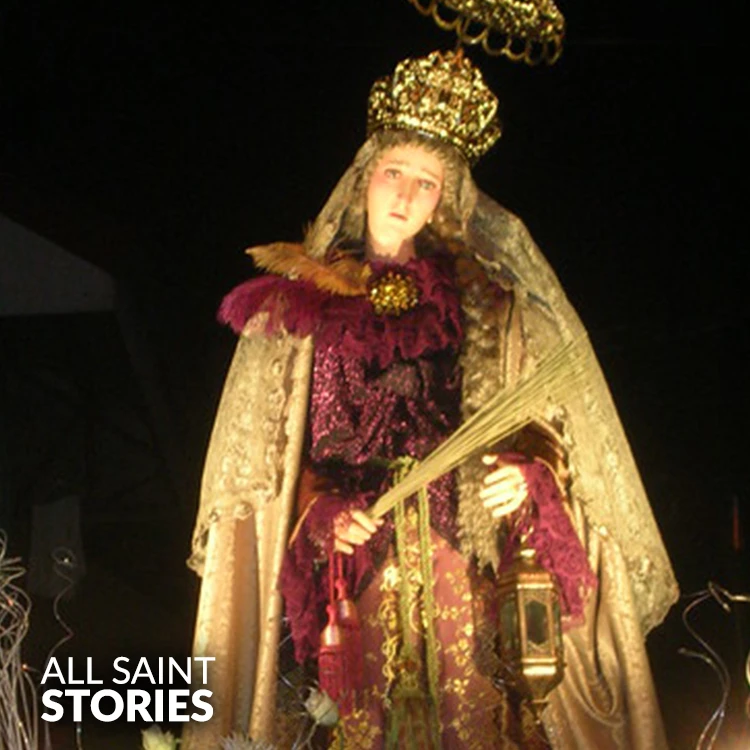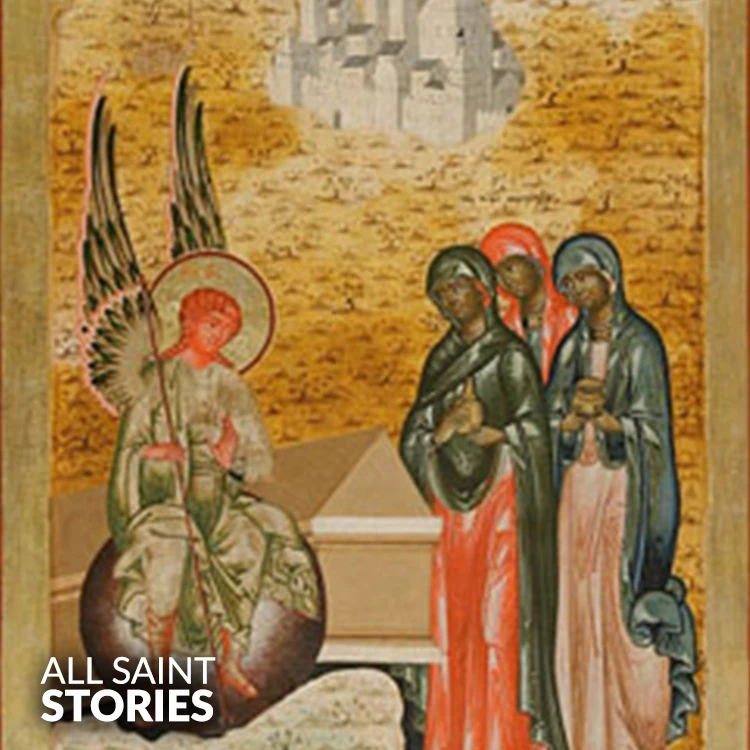O Holy Saint Mary Salome, faithful follower of Christ and witness to His Passion and Resurrection, pray for us that we may remain steadfast in faith and courage. As you stood by the cross and sought the Risen Lord, help us to seek Him with the same love and devotion. Amen.
ST. MARY SALOME
ST. MARY SALOME

St. Mary Salome was a disciple of Jesus, known for being present at His crucifixion and one of the Myrrhbearers who went to His tomb. She is traditionally believed to be the mother of the apostles James and John, and is honored for her faith, courage, and devotion to Christ.
St. Mary Salome holds a notable place among the holy women in the New Testament who followed Jesus during His earthly ministry. Though not extensively detailed in Scripture, the Gospels highlight her as one of the women present during some of the most pivotal events in Jesus’ life, particularly His crucifixion and resurrection. In Mark 15:40, she is named alongside Mary Magdalene and Mary the mother of James the younger, watching Jesus die on the cross from a distance. Her presence at such a harrowing moment signifies not only her devotion but also her bravery, as many had fled in fear.
In Mark 16:1, she is listed as one of the Myrrhbearers—the women who came to the tomb of Jesus early on the first day of the week to anoint His body. This act of service and honor places her among the first witnesses to the Resurrection, an event that transformed the course of history and affirmed the divinity of Christ. That she was entrusted with the message of the Risen Lord reflects her importance in the early Christian community.
Tradition and Church Fathers, such as Jerome and others, have identified Mary Salome as the wife of Zebedee and the mother of James and John, the “Sons of Thunder” (Mark 3:17). If so, she would have played a critical maternal role in the early Church, raising two key apostles and followers of Jesus. This connection places her as a matriarchal figure in the faith, both biologically and spiritually.
The name "Salome" is derived from the Hebrew word shalom, meaning peace, which may reflect her character and the peace she brought through her unwavering service. Although not canonized in the formal sense as seen in later centuries, St. Mary Salome has been venerated as a saint since the earliest days of Christianity. Her feast is celebrated in the Roman Catholic Church on October 22, and in the Eastern Orthodox Church, she is honored on the Sunday of the Myrrhbearers, which falls on the second Sunday after Easter.
While little is definitively known about her later life or death, tradition holds that she continued to support the early Christian community and may have remained in the Holy Land. Her burial place is uncertain, though some traditions associate her with Jerusalem or the Galilean region.
Her legacy is particularly cherished in the role of the Myrrhbearers, a group of faithful women whose loyalty and courage stood in contrast to the fear that overtook many others at the time of Christ's death. She exemplifies a model of faithful discipleship—serving Christ through action, presence, and witness. Her example continues to inspire Christian women and all believers to remain close to Christ even in suffering and uncertainty.
Video Not Found
The information on this website is compiled from various trusted sources. While we aim for accuracy, some details may be incomplete or contain discrepancies.
If you notice any errors or have additional information about this saint, please use the form on the left to share your suggestions. Your input helps us improve and maintain reliable content for everyone.
All submissions are reviewed carefully, and your personal details will remain confidential. Thank you for contributing to the accuracy and value of this resource.
Credits & Acknowledgments
- Anudina Visudhar (Malayalam) – Life of Saints for Everyday
by Msgr. Thomas Moothedan, M.A., D.D. - Saint Companions for Each Day
by A. J. M. Mausolfe & J. K. Mausolfe - US Catholic (Faith in Real Life) – Informational articles
- Wikipedia – General reference content and images
- Anastpaul.com – Saint images and reflections
- Pravachaka Sabdam (Malayalam) – Saint-related content and insights
We sincerely thank these authors and platforms for their valuable contributions. If we have unintentionally missed any attribution, please notify us, and we will make the correction promptly.
If you have any suggestion about ST. MARY SALOME
Your suggestion will help improve the information about this saint. Your details will not be disclosed anywhere.
© 2025 Copyright @ www.allsaintstories.com





 English
English
 Italian
Italian
 French
French
 Spanish
Spanish
 Malayalam
Malayalam
 Russian
Russian
 Korean
Korean
 Sinhala
Sinhala
 Japanese
Japanese
 Arabic
Arabic
 Portuguese
Portuguese
 Bantu
Bantu
 Greek
Greek
 German
German
 Dutch
Dutch
 Filipino
Filipino